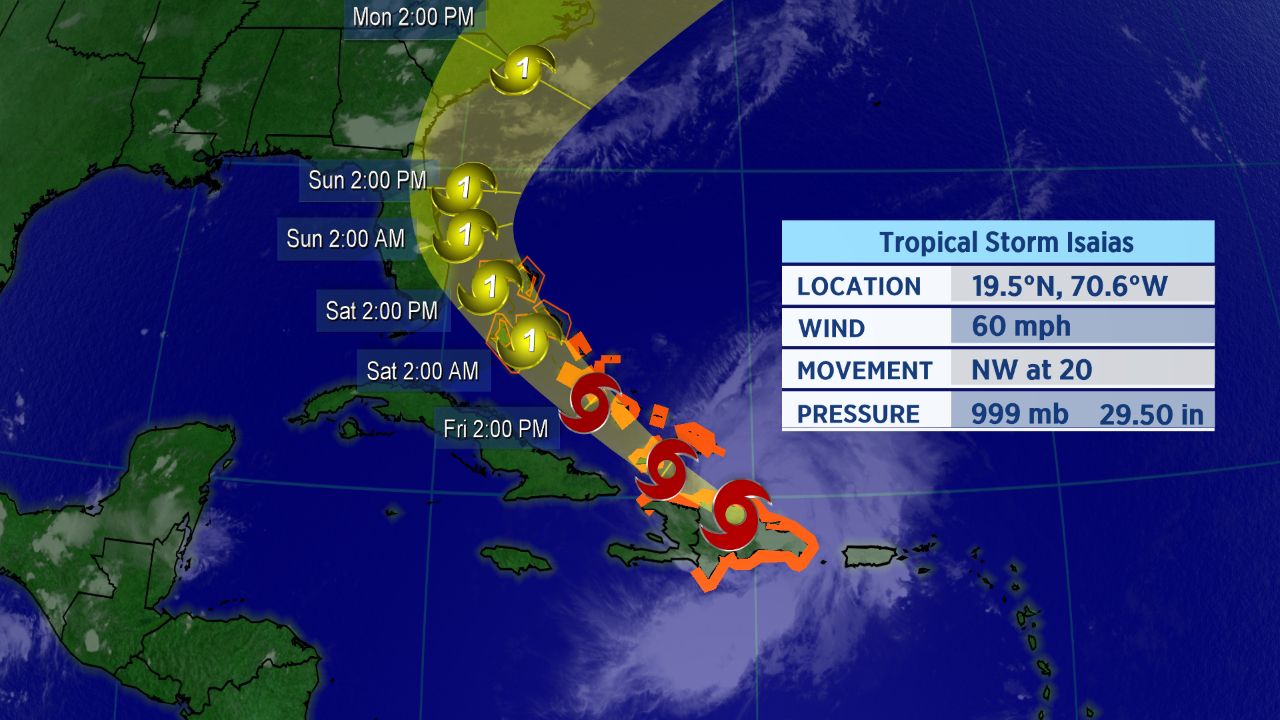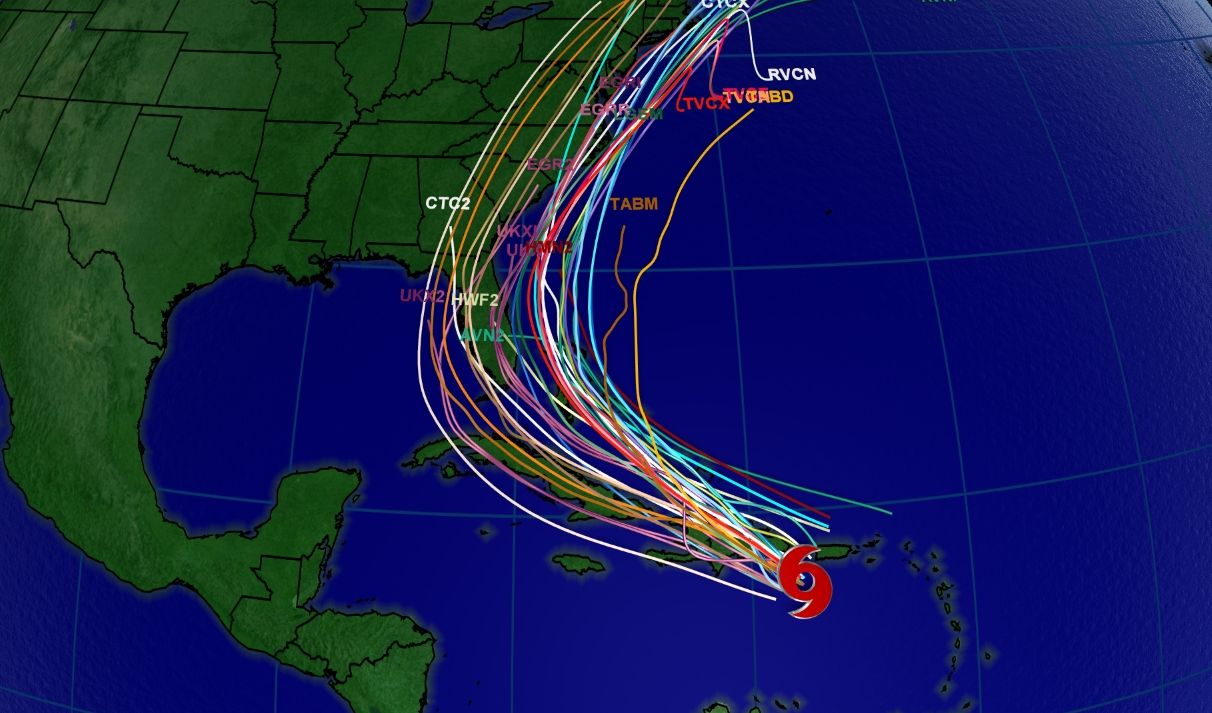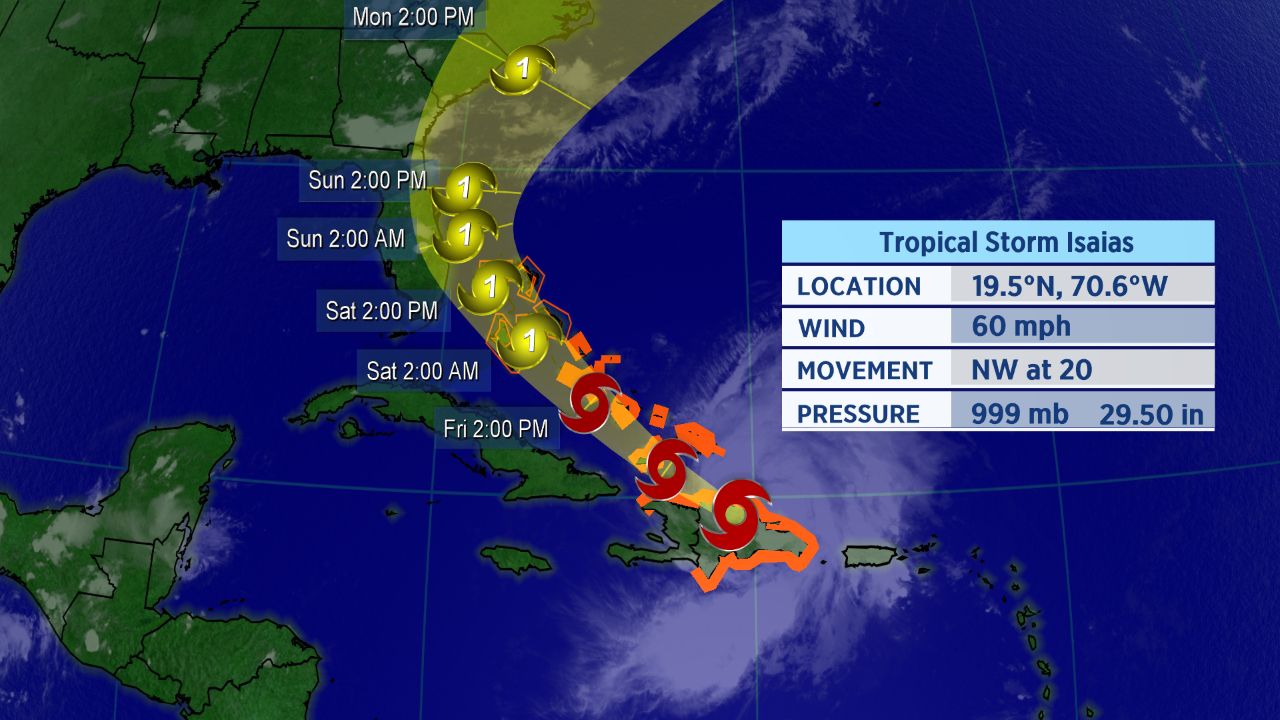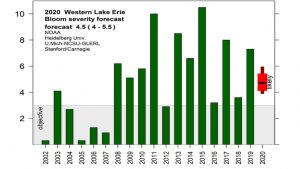Tropical Storm Isaias continues to move northwest while it batters Hispaniola. Mainland U.S. impacts are possible this weekend, though high forecast uncertainty remains.

Forecast cone for Tropical Storm Isaias.
The center of Isaias was located over the Dominican Republic as of Thursday afternoon, and was moving briskly to the northwest across the eastern Caribbean. A ridge of high pressure located northeast of the storm is keeping its forward speed at about 20 mph, which is relatively fast for a tropical system.
A tropical storm watch has been issued for parts of eastern Florida, including Miami and West Palm Beach. A watch means tropical storm conditions are possible within 48 hours.
The spaghetti models, a suite of computer forecast models overlayed on a map, show the storm is likely to gradually turn north as it moves westward across the Atlantic.

Spaghetti model tracks as of Thursday morning.
Tropical storm warnings are in place for much of the Caribbean, including the Dominican Republic, Haiti, the Turks and Caicos and the central and the Bahamas. With Isaias now expected to strengthen, hurricane conditions will be possible in parts of the Bahamas.
Isaias has already brought heavy rainfall and gusty winds to the Virgin Islands and Puerto Rico. At least five inches of rain fell in San Juan, Puerto Rico’s capital and largest city, prompting numerous flash flood warnings across the island.
Winds in excess of 50 mph were recorded on Puerto Rico during the storm as well. Punta Cuna, located at the eastern tip of the Dominican Republic, recorded a 46 mph wind gust on Thursday afternoon as Isaias’s center passed just south of the city.
Forecast Remains Tricky
A high pressure ridge over the eastern Atlantic will continue to steer Isaias west-northwestward to northwestward over the next couple of days.
On Friday, a trough moving into the eastern U.S. will weaken the western portion of the ridge and cause Isaias to steer more north-northwestward. As the trough slides more to the east, this will help steer Isaias more northeastward.
Confidence on the track still remains uncertain due to the possible interaction with land. But, general trends continue to push the storm further east. Nonetheless, Florida and the rest of the southeastern U.S. should closely monitor this system.
Isaias officially became the ninth-named storm of the Atlantic season, and therefore, it also became the earliest I-named storm on record. The previous record for the earliest ninth storm of the season was Irene, which formed on August 7, 2005.
If you’re wondering how exactly Isaias is pronounced, here’s a detailed guide on how to properly say it (along with all the other 2020 Atlantic storms. In short, Isaias pronounced over four syllables: ees-ah-EE-ahs.
Keep checking in for the latest updates.




